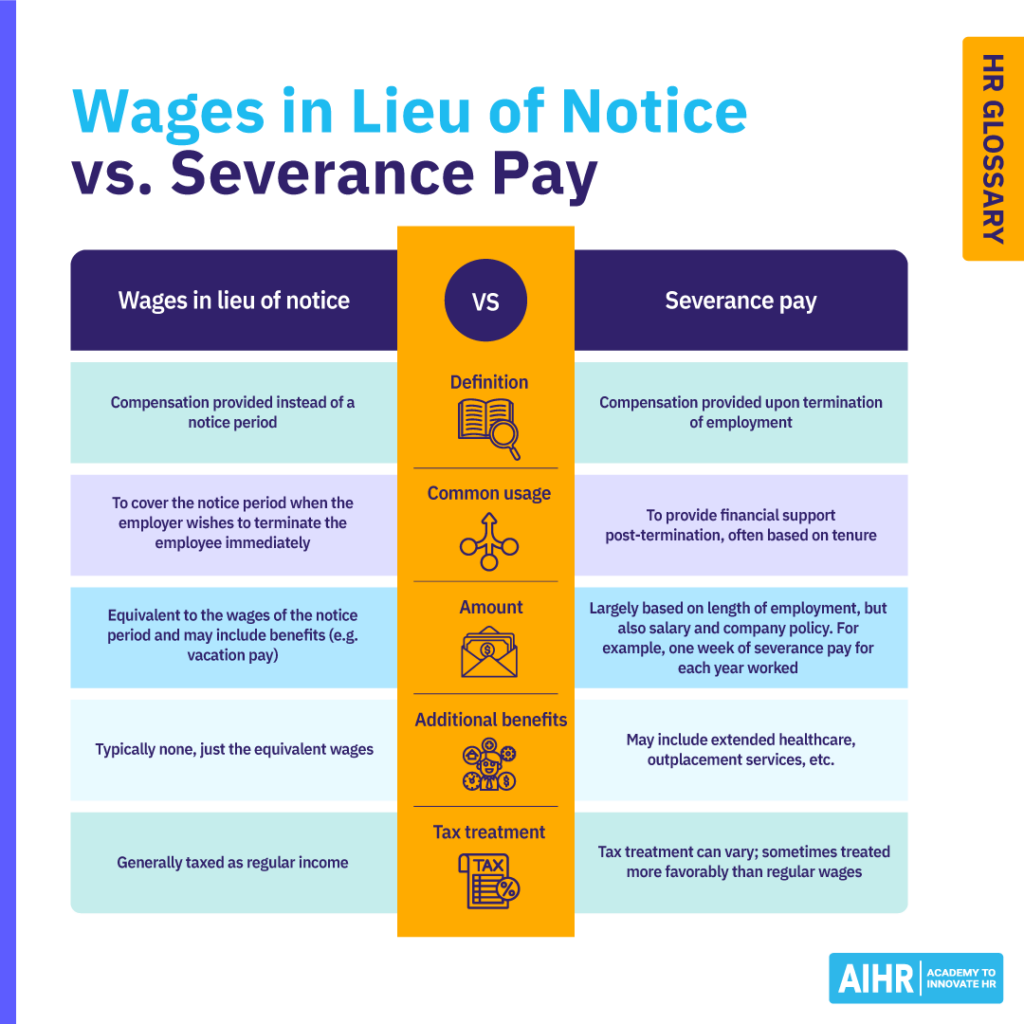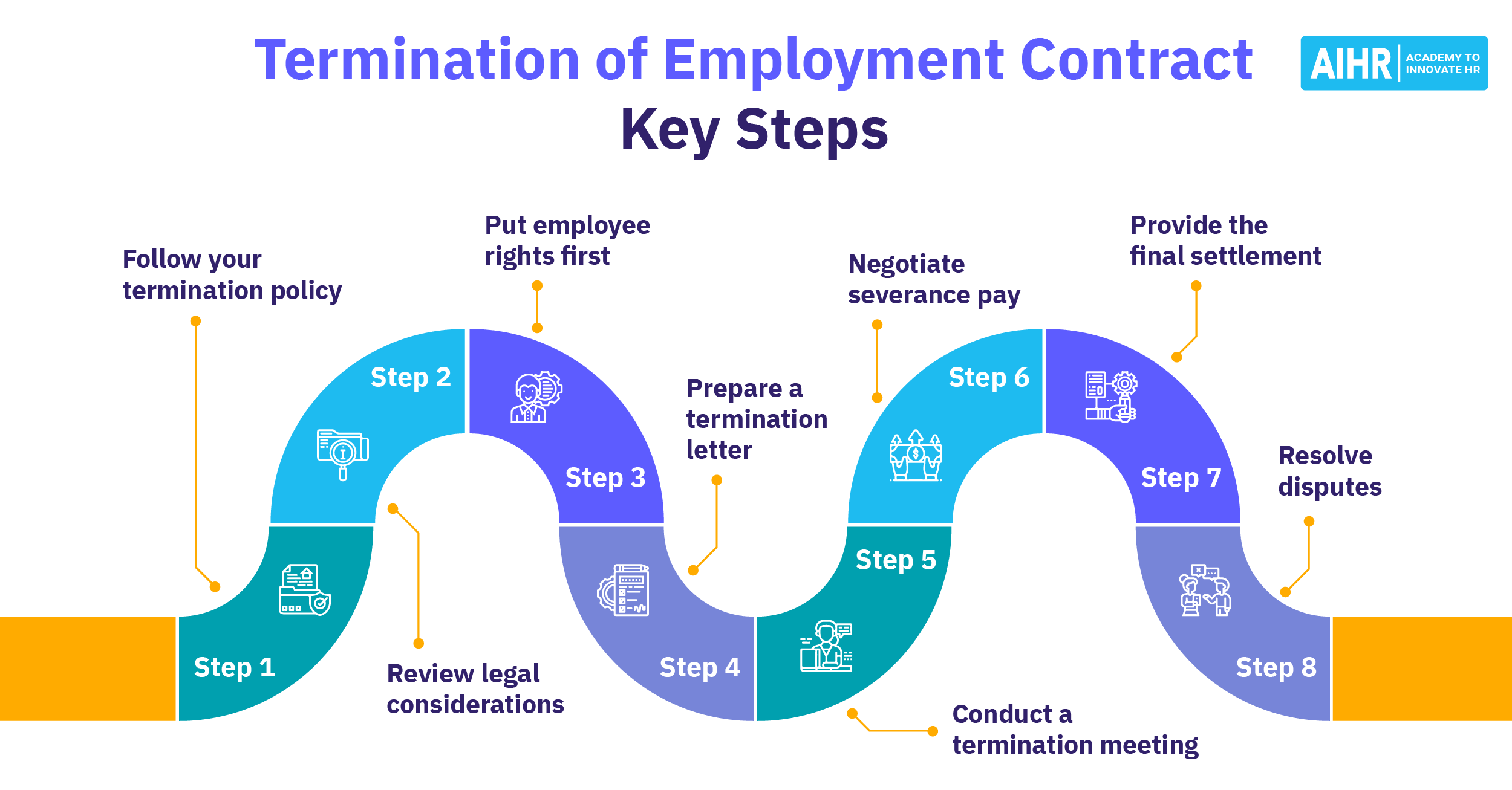Wages in Lieu of Notice
What are wages in lieu of notice?
Wages in lieu of notice are the financial payments an employee receives upon termination, which allows them to receive pay instead of having to work during their required notice period.
Also known as payment in lieu of notice (PILON), employers may provide this financial compensation when an employee’s job is terminated immediately. The employee receives the wages they would have normally received if they had worked during their notice period. Organizations commonly offer wages in lieu of notice during redundancies and reorganizations to minimize conflict or reduce stress for terminated employees.
Wages in lieu of notice vs. severance pay
Wages in lieu of notice are payments made to employees when their employment is terminated without the required notice period. Instead of working through the notice period, the employee receives a lump sum equivalent to the wages they would have earned during that time. This payment is considered a regular salary and is subject to payroll taxes.
Severance pay, on the other hand, is provided to employees upon termination due to layoffs, restructuring, or mutual agreement. It aims to support the employee financially during their transition to new employment. Severance pay is typically based on factors like the employee’s length of service, position, and salary, and it may include additional benefits such as extended healthcare coverage or outplacement services. The tax treatment of severance pay can differ from that of regular wages.
The key difference between the two lies in their purpose and calculation. Wages in lieu of notice compensate for the lack of a notice period with a straightforward lump sum, while severance pay is a more comprehensive financial support package designed to help employees during their job search, often considering multiple factors and potentially offering additional benefits.

How do wages in lieu of notice work?
When providing wages in lieu of notice, it’s important to follow these essential steps:
- Determine eligibility: The first step is to determine whether the employment contract, local labor laws, or collective bargaining agreements allow for wages in lieu of notice. This type of payment is typically specified in the contract or covered under employment standards legislation.
- Calculate the amount: Determine the amount of wages in lieu of notice based on the employee’s base salary, eligible benefits (e.g., vacation pay), and the length of their notice period.
- Tax considerations: Income tax and payroll deductions need to be applied to wages in lieu of notice.
- Other legal and contractual requirements: Consider any other legal or contractual requirements that may need to be factored into the employee’s final payment, such as vacation pay, bonus payments, or unused sick leave.
Example: Wages in lieu of notice in Tennessee
The state of Tennessee has no statutory requirement to provide notice or offer wages in lieu of notice. However, employers can include a wages-in-lieu of-notice policy in employment contracts. Without this stipulation, both employees and employers can terminate employment without notice (and without wages in lieu of notice).
How do you calculate wages in lieu of notice?
Here is a step-by-step guide to calculating wages in lieu of notice:
- Step 1: Determine the notice period: Identify the required notice period according to the employment contract, as well as local labor laws. This period could range from a few days to several months, depending on the employee’s tenure and the level of their job.
- Step 2: Calculate the base salary: Multiply the employee’s base pay by the number of days, weeks, or months of the notice period.
- Step 3: Include regular benefits: Based on the employment contract and any other local labor laws requirements, include the value of eligible employee benefits, such as vacation pay, health insurance, or transportation allowance.
- Step 4: Calculate any other additional payments: Include payments, such as bonuses or commissions, that an employee would have received during their notice period.
- Step 5: Finalize the total payment: Add up the amounts from steps 2-4 (base salary, benefits, and additional payments), including required deductions (e.g., income tax, social security contributions), to determine the final net pay due to the employee.
- Step 6: Maintain clear documentation: Ensure you have a final record of the calculation of the wages in lieu of notice, which should include documentation of the key steps above. It’s necessary to have this detailed record in case of any inquiries or disputes.
Wages in lieu of notice wages calculation example
Here’s a simple example of how to calculate wages in lieu of notice:
- Notice period = 3 months
- Base salary = $4,700/month
- Benefits = $800/month (vacation pay and health insurance)
- Additional payments = $110/month (transportation subsidy)
Calculation of total payment = ($4,700 + $800 + $110) x 3 = $16,830 (gross wages in lieu of payment)*
*NOTE: The above figure does not include income tax and other mandatory deductions.
HR tip
Ensure that conditions around wages in lieu of notice are clearly outlined in employment contracts. Key details to include immediate termination, how wages in lieu of payment are calculated, and how and when an employee will receive this payment. If these details are excluded from an employee’s contract, the employer may be liable for breaching the contract by not allowing them to work during their notice period.
FAQ
The gross amount of wages in lieu of notice is the total amount paid to a terminated employee before taxes and deductions.
An employee can receive wages in lieu of notice and be eligible for unemployment benefits if their circumstances meet the general requirements of their state or region. Depending on an employee’s legal residence, there may be specific rules and waiting periods for receiving unemployment benefits.









